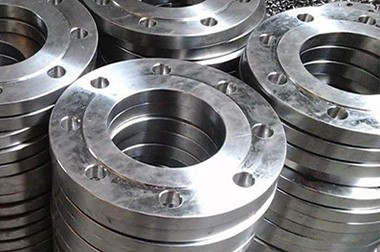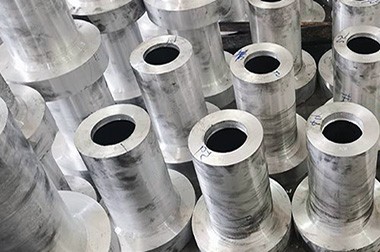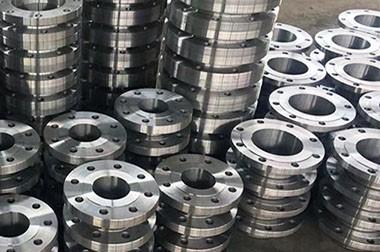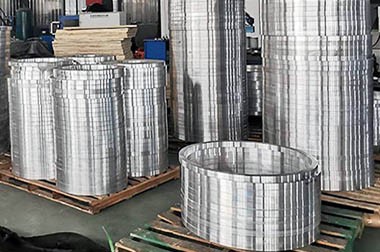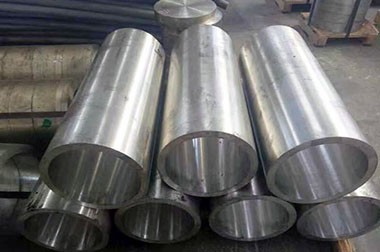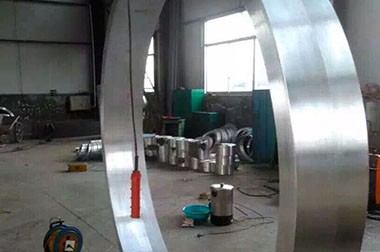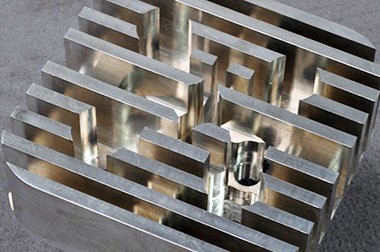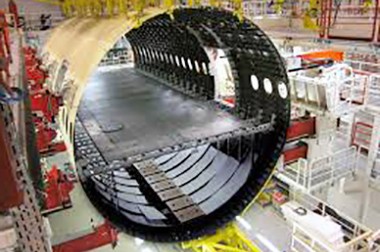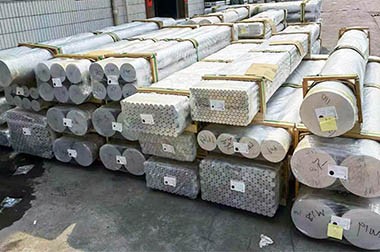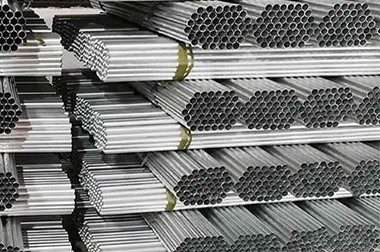2014 T3 T4 T6 T651 T6511 Aerospace Aluminum Forgings
2014 aluminum alloy forgings are widely used in aerospace, automotive, military, and high-performance equipment due to their superior mechanical properties and good workability. Their high strength and relatively low density make them an ideal substitute for steel.
Common forged products of 2014 aluminum alloy in the aerospace field include forged bars, forged balls, forged shafts, forged plates, and forged gears, which are primarily used for airfoil shapes, brackets, connectors, wheels, and flight control components.
Forged parts are generally stronger than equivalent cast or machined parts. During the forging process, internal grains deform to follow the general shape of the part. This results in continuous grain throughout the part, leading to its high strength characteristics. Due to their high strength, 2014 forgings are almost always used in areas where reliability and personal safety are critical, such as in aerospace applications.
Specifications of 2014 aerospace aluminum forgings
| FORGING | TYPE | MAX. WEIGHT | MAX. DIMENSION |
| Open Die Forging | Cube | ≤9T | Length≤7000mm, Width≤2000mm, Height≤500mm |
| Disk | ≤5T | Diameter≤2500mm | |
| Ring | ≤5T | Outer diameter of quenching parts≤2500mm, Outer diameter of non-quenching parts≤4000mm, Height≤500mm | |
| Cylinder | ≤5T | Outer diameter 200-800mm, Length≤2000mm; Outer diameter 801-2000mm, Length≤1500mm; | |
| Axle | ≤8T | Length≤7000mm, Diameter≤800mm | |
| Backward Extrusion | Forged Pipe | Outer diameter≤830mm, Inner diameter≤650mm, Length≤1800mm | |
| Closed Die Forging | Common Closed Die Forgings | - | PVA≤3.0㎡(Diameter≤1950mm) |
| Complex Closed Die Forgings | - | PVA≤1.5㎡(Diameter≤1400mm) |
Properties of 2014 Aerospace Aluminum Forgings
- 1. High Strength: 2014 aluminum alloy has high tensile and yield strength, suitable for bearing high loads.
- 2. Low Density: Compared to steel, aluminum alloys have a lower density, helping to reduce structural weight.
- 3. Good Machinability: Can be formed through processes such as forging, extrusion, and milling.
- 4. Corrosion Resistance: While its corrosion resistance is not as good as some other aluminum alloys, it can be improved through surface treatments (such as anodizing).
- 5. Heat Treatability: Strength can be further enhanced through heat treatment (such as T6, T651 states).
Popular Aerospace Aluminum Forgings from Hoamei
Haomei Aluminum offers alloys including 2014, 2024, 2124, 2219, 2618, 2619, 3003, 5083, 6061, 7049, 7050, 7075, 7079, 7149, 7150, and 7175 tempers, available upon request, compliant with all AMS, ASTM, Boeing commercial, and Boeing military specifications.
| TYPE | SPECIFICATIONS |
| 2014 | AMS4133, 4134, 4314, AMS-A-22771 |
| 2024 | AMS-QQ-A-367 |
| 2219 | AMS4143, 4144, AMS-QQ-A-367, AMS-A-22771 |
| 2618 | AMS4132, AMS-QQ-A-367, AMS-A-22771 |
| 6061 | AMS4127, 4146, AMS-QQ-A-367, AMS-A-22771 |
| 7049 | AMS4111, AMS-QQ-A-367, AMS-A-22771 |
| 7050 | AMS4107, 4108, AMS-A-22771 |
| 7075 | AMS4126, 4131, 4141, 4147, AMS-QQ-A-367 |
| 7079 | AMS-QQ-A-367 |
| 7150 | AMS-A-22771 |
| 7175 | AMS4148, 4149, 4179, AMS-A-22771 |
Haomei 2014 aerospace aluminum forging standards
- AMS 4133, AMS 4134, AMS 4120, AMS 4121
- QQ-A-367
- BS 2 L77, BS L 103
- MIL-A-21180
- ISO 209-1
2014 aerospace forgings chemical composition
| Element | Composition % |
| Al | 90.4%-93.0% |
| Cu | 3.9%-5.0% |
| Mn | 0.4%-1.2% |
| Mg | 0.2%-0.8% |
| Si | 0.5%-1.2% |
| Fe | 0-0.5% |
| Zr | 0-0.25% |
| Cr | 0-0.1% |
| Ti | 0-0.15% |
2014 Aerospace Grade Forging Products
We offer many size forgings in both standard and unique geometries to meet your needs.
- Complex Shapes: These forgings are tailored to meet specific design requirements, allowing for intricate geometries that enhance performance and reduce weight. They're often used in aerospace applications where precision is crucial.
- Bars: Standard and custom-sized bars are produced for a variety of applications. They can be used in structural components, axles, or any application requiring uniformity and strength.
- Step Shafts, Eccentric Shafts & Rotor Shafts: These specialized shafts are designed for unique mechanical applications. Step shafts may have varying diameters along their length, while eccentric shafts are offset to create motion, and rotor shafts are used in engines and turbines.
- Hollows: Hollow forgings are typically used to reduce weight while maintaining strength. They can serve as structural components or be utilized in applications requiring inner passageways for fluids or gases.
- Hubs & Tooled Forgings: Hubs are central components that connect various parts of machinery, often requiring precision to ensure proper alignment. Tooled forgings are shaped to fit specific tooling requirements, enhancing functionality in manufacturing processes.
- Forged & Rolled Rings: These rings are essential in applications requiring high strength and resistance to deformation. They are often used in bearings, gears, and other high-stress environments.
2014 Aerospace Aluminum Forgings Processing Methods
2014 aluminum alloy forgings are often made using hot or cold forging processes, which can improve the microstructure of the material and enhance strength and toughness. Material properties are further enhanced through solution treatment and aging (such as T6, T651 states).
After machining, 2014 forgings can be shaped into complex parts.
Classification by Temperature
Forgings are roughly classified into cold forging, warm forging, or hot forging based on processing temperature. Aluminum alloys that easily undergo precipitation hardening can be hot forged and then hardened.
1. Cold Forging
Definition: Forging process conducted at room temperature or below the recrystallization temperature.
Features:
- Increases the strength and hardness of the material.
- Typically used for small, precision parts.
- Often requires greater forming force due to the small amount of deformation.
2. Warm Forging
Definition: Forging conducted at temperatures below the recrystallization temperature but above room temperature.
Features:
- Provides appropriate plasticity and strength.
- Suitable for parts of medium complexity with good machinability.
3. Hot Forging
Definition: Forging process conducted at temperatures above the recrystallization temperature.
Features:
- Metals are easily deformed, suitable for complex-shaped parts.
- The grains of the material will recrystallize after processing, usually resulting in better mechanical properties.
Aluminum alloys (such as 2014 aluminum alloy) can undergo further precipitation hardening after hot forging to enhance their strength.
These forging processes are selected based on specific material and product requirements to optimize the performance and processing efficiency of the forgings.
Classification by Forging Method
Open Die Forging
Involves free deformation of 2014 aluminum billets between molds using hammers or presses. Suitable for small batch production and complex-shaped parts.
Advantages: High flexibility, suitable for customized production.
Die Forging
Involves forging using specific shaped dies, with the metal formed within the dies. It can be divided into open die forging and closed die forging.
Advantages: Suitable for mass production, high dimensional accuracy, and good surface quality.
Applications: Widely used in aerospace, automotive, and other industries.
Extrusion Forging
Involves placing metal billets into molds and applying pressure to extrude the metal along the mold's channel to form specific shapes.
Advantages: Can manufacture long profiles, suitable for parts with complex cross-sections.
Applications: Commonly used to manufacture profiles and tubes.

